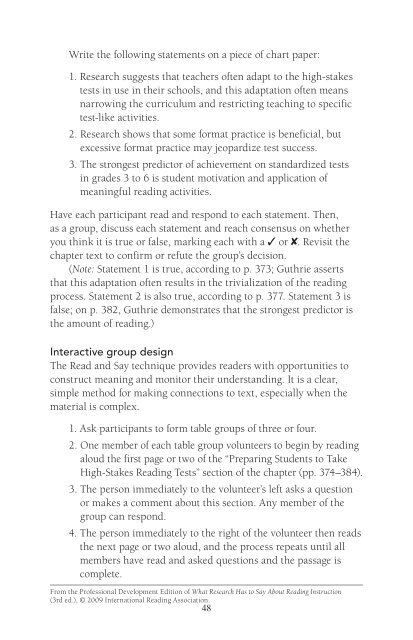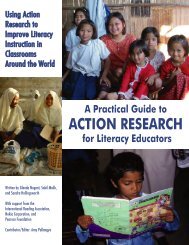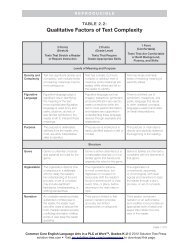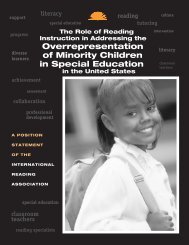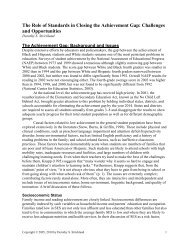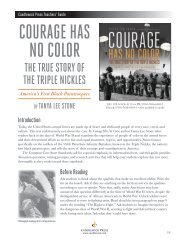What Research Has to Say About Reading Instruction - International ...
What Research Has to Say About Reading Instruction - International ...
What Research Has to Say About Reading Instruction - International ...
You also want an ePaper? Increase the reach of your titles
YUMPU automatically turns print PDFs into web optimized ePapers that Google loves.
Write the following statements on a piece of chart paper:<br />
1. <strong>Research</strong> suggests that teachers often adapt <strong>to</strong> the high-stakes<br />
tests in use in their schools, and this adaptation often means<br />
narrowing the curriculum and restricting teaching <strong>to</strong> specific<br />
test-like activities.<br />
2. <strong>Research</strong> shows that some format practice is beneficial, but<br />
excessive format practice may jeopardize test success.<br />
3. The strongest predic<strong>to</strong>r of achievement on standardized tests<br />
in grades 3 <strong>to</strong> 6 is student motivation and application of<br />
meaningful reading activities.<br />
Have each participant read and respond <strong>to</strong> each statement. Then,<br />
as a group, discuss each statement and reach consensus on whether<br />
you think it is true or false, marking each with a ✓ or ✘. Revisit the<br />
chapter text <strong>to</strong> confirm or refute the group’s decision.<br />
(Note: Statement 1 is true, according <strong>to</strong> p. 373; Guthrie asserts<br />
that this adaptation often results in the trivialization of the reading<br />
process. Statement 2 is also true, according <strong>to</strong> p. 377. Statement 3 is<br />
false; on p. 382, Guthrie demonstrates that the strongest predic<strong>to</strong>r is<br />
the amount of reading.)<br />
Interactive group design<br />
The Read and <strong>Say</strong> technique provides readers with opportunities <strong>to</strong><br />
construct meaning and moni<strong>to</strong>r their understanding. It is a clear,<br />
simple method for making connections <strong>to</strong> text, especially when the<br />
material is complex.<br />
1. Ask participants <strong>to</strong> form table groups of three or four.<br />
2. One member of each table group volunteers <strong>to</strong> begin by reading<br />
aloud the first page or two of the “Preparing Students <strong>to</strong> Take<br />
High-Stakes <strong>Reading</strong> Tests” section of the chapter (pp. 374–384).<br />
3. The person immediately <strong>to</strong> the volunteer’s left asks a question<br />
or makes a comment about this section. Any member of the<br />
group can respond.<br />
4. The person immediately <strong>to</strong> the right of the volunteer then reads<br />
the next page or two aloud, and the process repeats until all<br />
members have read and asked questions and the passage is<br />
complete.<br />
From the Professional Development Edition of <strong>What</strong> <strong>Research</strong> <strong>Has</strong> <strong>to</strong> <strong>Say</strong> <strong>About</strong> <strong>Reading</strong> <strong>Instruction</strong><br />
(3rd ed.), © 2009 <strong>International</strong> <strong>Reading</strong> Association.<br />
48


